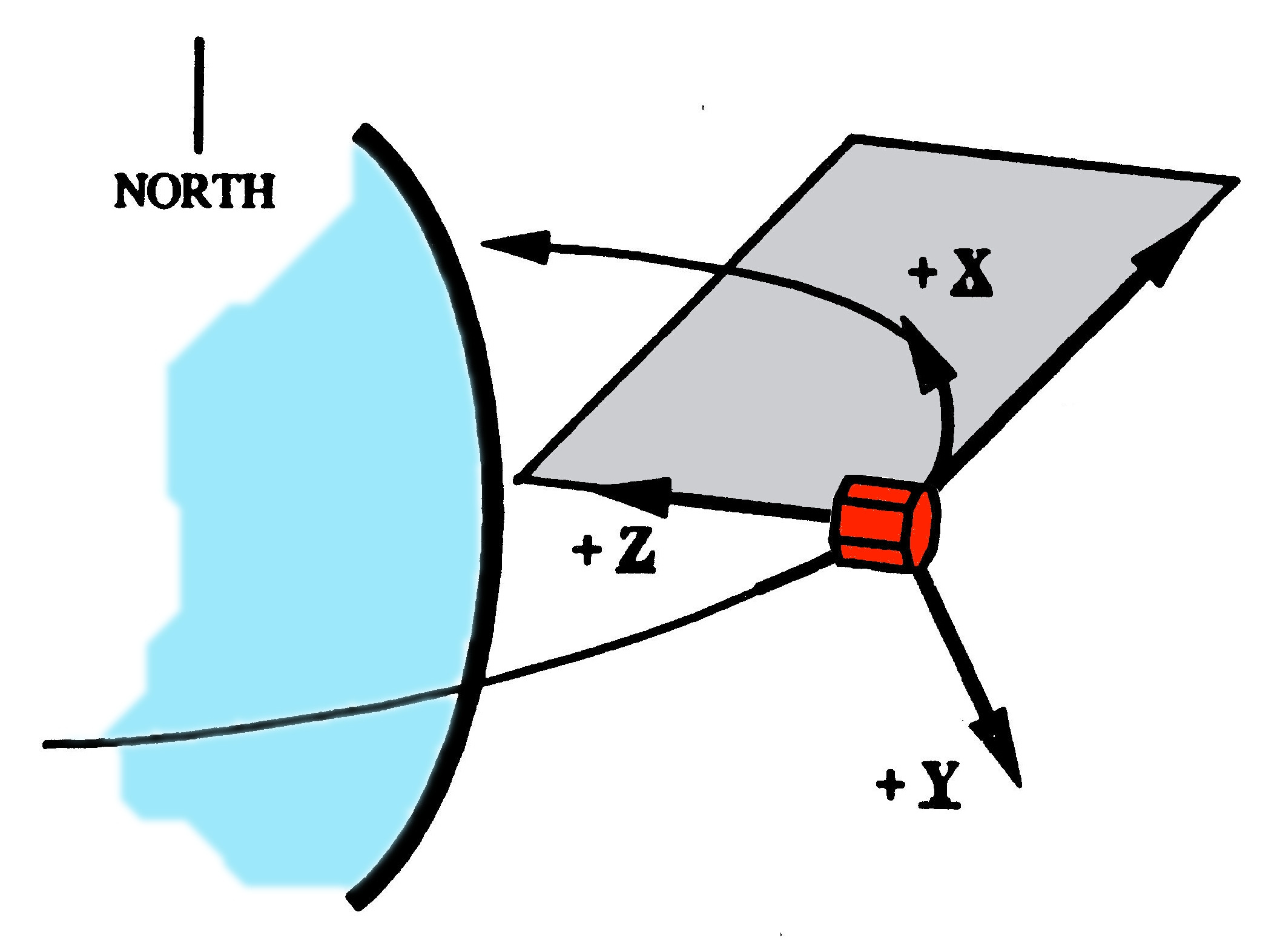I have been researching the genesis of the Clohessy-Wiltshire (C-W, or Hill's) equations. These equations are used to describe relative motions between the "chaser" and "target" spacecraft in a space rendezvous situation. A fairly decent derivation (I presume, as it is over my head - read on) is given in Clohessy - Wiltshire Analysis, Eugene M. Cliff, October 23, 1998
For reference, here are the rectangular coordinates NASA uses for space rendezvous considerations:
The origin of the depicted coordinate system is located at the "target" vehicle (depicted in red). The "chaser" vehicle is not depicted here.
The version of the C-W equations that is consistent with these coordinate axes is:
$$ \ddot{x}-2\omega\dot{z}=F_x $$
$$ \ddot{y}+\omega^2y=F_y $$
$$ \ddot{z}+2\omega\dot{x}-3\omega^2z=F_z$$
Note that omega ($\omega$) is, of course, angular velocity. Also, the $F$ terms represent component forces due to "chaser" spacecraft thruster firings.
When rearranged into the familiar $F=ma$ format, the equations become:
$$F_x=m(\ddot{x}-2\omega\dot{z}) $$
$$ F_y=m(\ddot{y}+\omega^2y) $$
$$ F_z=m(\ddot{z}+2\omega\dot{x}-3\omega^2z)$$
Note that I've "added" the mass term ($m$) back into the equations for clarification (I can do this with impunity, since these equations are only of interest to me when the thrust force components are all zero, implying a "free drift" situation for the "chaser" spacecraft - note that the "target" spacecraft is assumed to be always in free drift here).
Now my question:
Do the "extra" terms (the ones involving angular velocity) come about because you are dealing with objects that are moving in orbits? The forces referenced all act along orthogonal axes, and each of the acceleration terms include a linear acceleration along one of said axes.
But, we still have those "extra" acceleration terms to deal with.
My supposition is that the "extra" acceleration terms arise because there is orbital motion that is driven by a centripetal force (gravity).
Put into simple dirt farmer terms, am I too far off base here?



